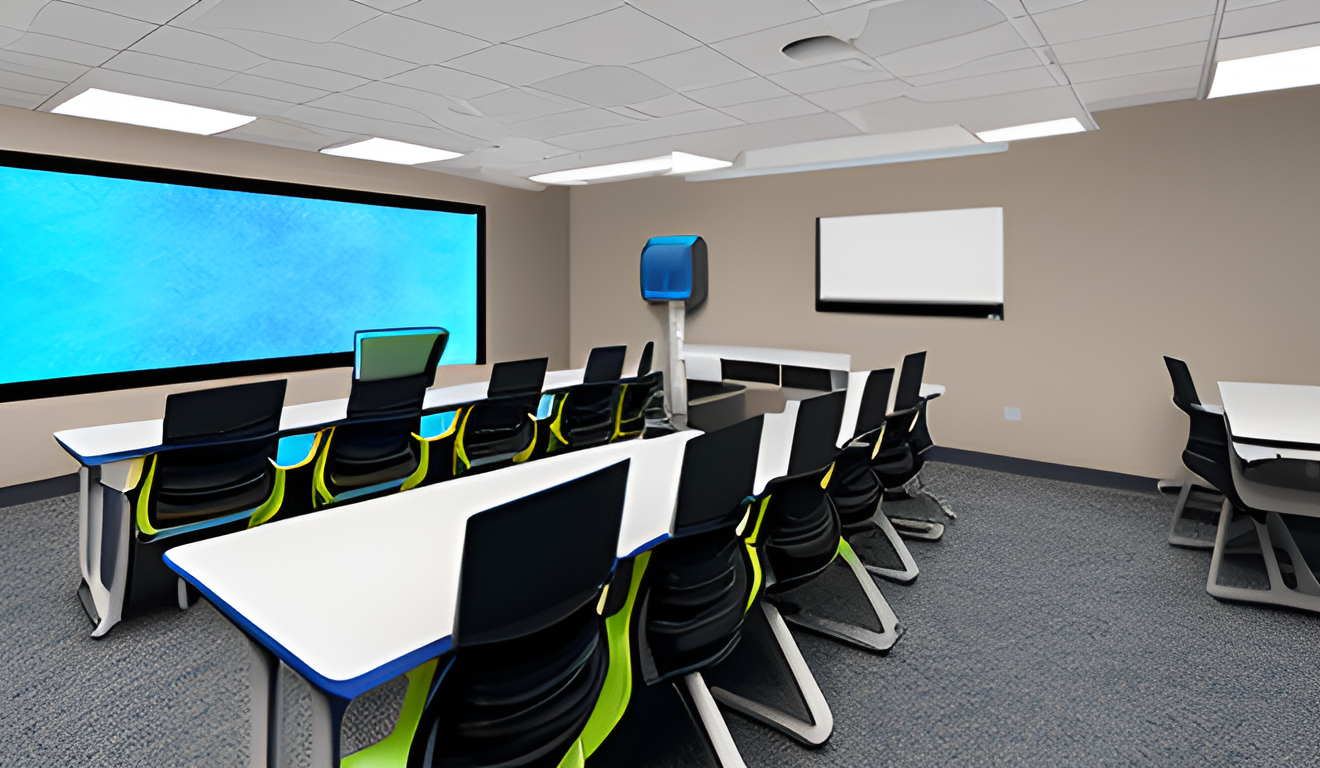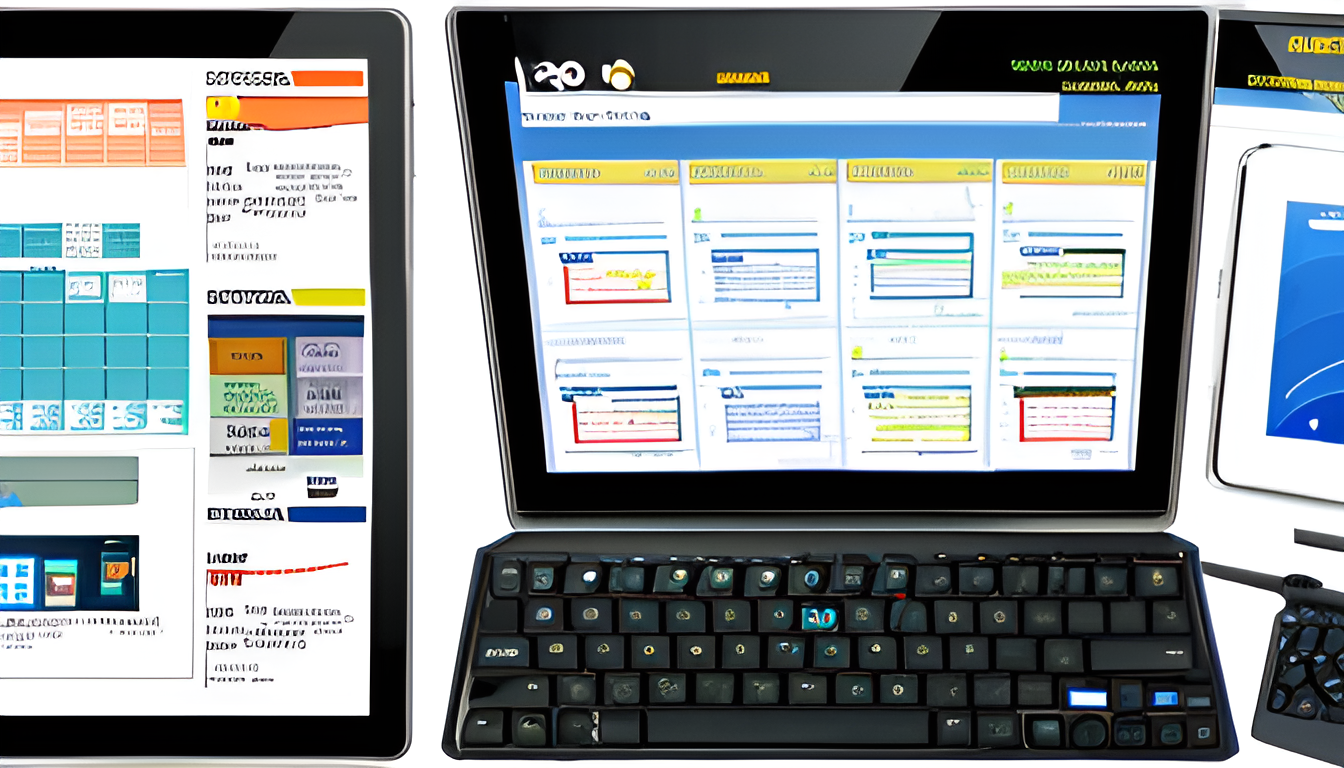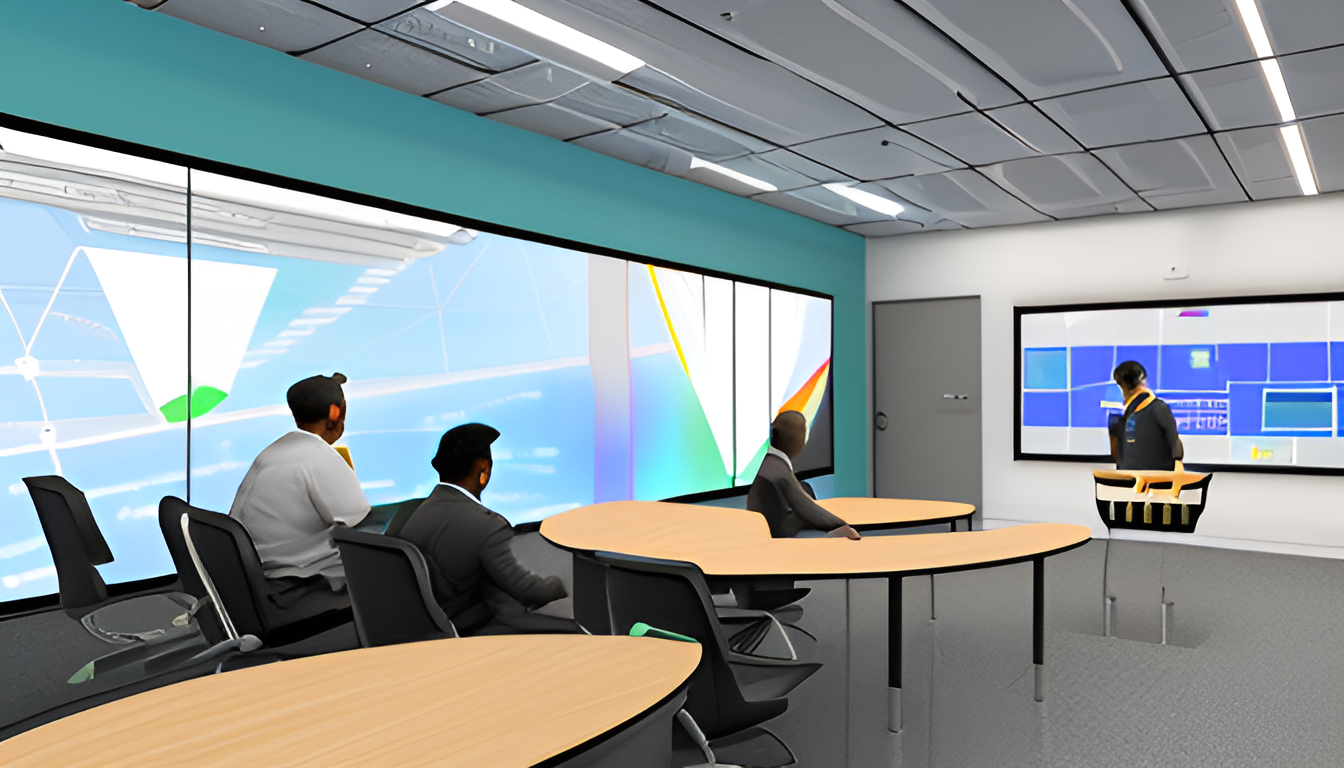AI in Education: Transforming the Learning Experience

In today’s fast-paced world, artificial intelligence (AI) is no longer just a futuristic concept; it’s a powerful tool reshaping how we approach education. Imagine walking into a classroom where every student’s learning experience is tailored just for them! That’s the magic of AI. It’s not just about making things easier; it’s about making learning more effective and engaging. With AI, educators can create a dynamic environment that adapts to each student’s needs, ensuring no one gets left behind.
As we delve into the various ways AI is transforming education, let’s first consider personalized learning. Traditional education often adopts a one-size-fits-all approach, which can lead to disengagement. However, AI can analyze individual learning styles and progress, allowing teachers to customize lessons. This means students can learn at their own pace, focusing on areas where they need the most help. Think of it as having a personal coach who knows your strengths and weaknesses, guiding you to success!
Moreover, AI-powered intelligent tutoring systems provide real-time feedback, enhancing understanding and retention. Imagine a student struggling with a math problem. Instead of waiting for the next class to ask for help, they receive immediate assistance tailored to their specific issue. This instant support can significantly boost confidence and learning outcomes.
Additionally, AI offers data-driven insights that empower educators. By analyzing vast amounts of data, AI can reveal patterns in student performance, helping teachers make informed decisions about their teaching strategies. It’s like having a crystal ball that shows what works and what doesn’t, allowing for continuous improvement.
However, the journey of integrating AI into education is not without its challenges. Issues such as access to technology, the need for teacher training, and resistance to change can hinder progress. Yet, the potential benefits far outweigh these obstacles. Schools that embrace AI are often at the forefront of innovation, providing students with the skills they need for a technology-driven future.
In conclusion, as we explore the future of AI in education, it’s clear that this technology is not just a trend but a transformative force. By embracing AI, we can create an educational landscape that is more inclusive, engaging, and effective for all learners. Are you ready to be part of this revolution?
Personalized Learning
Imagine stepping into a classroom where every student is not just a face in the crowd but an individual with unique learning needs and styles. Artificial Intelligence (AI) is making this dream a reality by enabling experiences that cater to each student’s strengths and weaknesses. Through advanced algorithms and data analytics, AI can assess how a student learns best—whether through visual aids, hands-on activities, or auditory lessons—and adjust the curriculum accordingly.
Gone are the days of a one-size-fits-all approach to education. With AI, teachers can create tailored lesson plans that resonate with each student. For instance, if a student struggles with math, AI can identify specific areas of difficulty and provide customized exercises to reinforce those concepts. This level of personalization not only boosts student engagement but also significantly enhances learning outcomes. Research shows that students who receive personalized instruction tend to perform better academically and feel more connected to the material.
Furthermore, AI-driven platforms can track a student’s progress in real-time, offering insights that allow educators to intervene promptly when a student is falling behind. These platforms often include features such as:
- Adaptive learning paths that evolve based on student performance
- Immediate feedback mechanisms that help students understand their mistakes
- Access to a wealth of resources tailored to individual learning preferences
In essence, personalized learning powered by AI transforms the educational landscape by fostering an environment where students are empowered to take charge of their learning journeys. As we move forward, the integration of AI in education promises not only to enhance engagement but also to prepare students for a future where adaptability and personalized skills are paramount.
Intelligent Tutoring Systems
Intelligent Tutoring Systems (ITS) are at the forefront of educational technology, acting as personalized learning companions for students. Imagine having a tutor available 24/7, ready to assist you with your studies, adapt to your learning pace, and provide immediate feedback. Sounds like a dream, right? Well, that’s the reality that AI brings into the classroom!
These systems leverage artificial intelligence to create customized learning experiences. By analyzing a student’s performance in real-time, ITS can identify strengths and weaknesses, adjusting the content accordingly. This means that if a student struggles with a particular concept, the system can provide additional resources or alter its teaching methods to ensure comprehension. It’s like having a personal coach who knows exactly when to push you harder or when to slow down.
One of the most remarkable features of ITS is their ability to engage students through interactive learning experiences. For instance, students can work on problem-solving tasks that are tailored to their skill level, receiving instant feedback that helps them understand mistakes and reinforce learning. The interactive nature of these systems keeps students motivated and encourages them to take charge of their own learning journey.
Furthermore, ITS can collect valuable data on student interactions, which can then be analyzed to improve both the system and educational strategies. This data-driven approach allows educators to gain insights into common areas of difficulty across the class, enabling them to refine their teaching methods. In this way, ITS not only supports individual learners but also contributes to a broader understanding of educational challenges.
In summary, Intelligent Tutoring Systems represent a significant leap forward in education. By offering personalized support, enhancing engagement, and providing actionable insights, these AI-driven tools are revolutionizing the way students learn and succeed. As technology continues to evolve, the potential for ITS to transform education is truly exciting!
Data-Driven Insights
In the age of information, are becoming the backbone of educational strategies. Imagine being able to analyze a treasure trove of student performance data to unlock the secrets of effective teaching! AI does just that by processing vast amounts of information to reveal patterns and trends that can significantly impact educational outcomes.
With the help of AI, educators can now gain a deeper understanding of how their students learn. For instance, by examining data points such as test scores, attendance, and engagement levels, teachers can identify which students may need additional support and which teaching methods resonate best with their classes. This not only helps in tailoring instruction but also fosters an environment where no student is left behind.
Moreover, AI tools can provide real-time analytics, allowing educators to make informed decisions on the fly. Picture a classroom where a teacher can instantly see which concepts students struggle with the most. By utilizing , they can pivot their teaching strategies to address these challenges immediately. This proactive approach can lead to improved student engagement and, ultimately, better academic performance.
To illustrate the power of data-driven insights, consider the following table that showcases potential areas of focus based on student performance metrics:
| Performance Metric | Actionable Insight |
|---|---|
| Low Test Scores | Implement targeted review sessions |
| Poor Attendance | Investigate underlying issues and provide support |
| High Engagement in Activities | Incorporate more of these activities into the curriculum |
By leveraging these insights, educators can create a more responsive and effective learning environment. However, it’s essential to remember that data should be used responsibly, ensuring that student privacy is always prioritized. As AI continues to evolve, the potential for data-driven insights in education will only grow, paving the way for a more personalized and impactful learning experience.

Automated Administrative Tasks
In today’s fast-paced educational landscape, automation is becoming a game-changer for teachers and administrators alike. Imagine a world where tedious administrative tasks are handled by intelligent systems, freeing up precious time for educators to focus on what truly matters: teaching and engaging with students. With the help of AI technologies, schools can streamline various administrative processes, leading to improved efficiency and productivity.
Consider the daily grind of grading assignments, managing schedules, and communicating with parents. These tasks can be overwhelming, but AI can step in to lighten the load. For instance, automated grading systems can quickly assess student work and provide instant feedback, allowing teachers to dedicate more time to personalized instruction. This not only enhances the learning experience for students but also alleviates stress for teachers.
Moreover, AI can assist in scheduling by analyzing class sizes, teacher availability, and student needs. This ensures that resources are allocated effectively, reducing conflicts and optimizing the use of facilities. Imagine a scheduling system that learns from past data and predicts the best arrangements for classes, events, and meetings.
Communication is another area where AI shines. Automated messaging systems can keep parents informed about their child’s progress, upcoming events, and important announcements. This not only fosters a strong school-community relationship but also ensures that parents are actively involved in their children’s education.
To illustrate the impact of AI on administrative tasks, consider the following table:
| Task | Traditional Method | AI-Enhanced Method |
|---|---|---|
| Grading | Manual assessment | Automated grading systems |
| Scheduling | Manual planning | AI-driven scheduling |
| Communication | Manual notifications | Automated messaging systems |
In conclusion, the integration of AI into administrative tasks not only enhances efficiency but also allows educators to spend more time on what they do best—teaching. As we continue to embrace these technologies, the potential for transforming the educational experience becomes limitless.
Enhancing Accessibility
In today’s diverse educational landscape, accessibility has become a crucial factor in ensuring that all students have equal opportunities to learn. With the rise of artificial intelligence (AI), there are innovative tools designed to cater to the unique needs of students with disabilities. Imagine a classroom where every student, regardless of their challenges, can engage with the material in a way that suits them best. This is not just a dream; it’s becoming a reality thanks to AI technologies.
AI-powered tools can provide real-time assistance by offering personalized learning experiences that adapt to each student’s specific requirements. For instance, text-to-speech software can help visually impaired students access written content, while speech recognition technology can assist those with learning disabilities in expressing their thoughts more easily. By breaking down these barriers, AI fosters a more inclusive learning environment where every student can thrive.
Furthermore, AI can analyze individual learning patterns and offer tailored resources. This means that students with different learning styles can receive customized content that resonates with them. For example, a student who struggles with traditional reading may benefit from interactive multimedia resources that combine visuals and audio, making the learning process more engaging and effective.
To illustrate the impact of AI on accessibility, consider the following table showcasing various AI tools and their applications in education:
| AI Tool | Application |
|---|---|
| Text-to-Speech Software | Assists visually impaired students by converting text into spoken words. |
| Speech Recognition Technology | Helps students with learning disabilities articulate their thoughts verbally. |
| Adaptive Learning Platforms | Customizes learning paths based on individual student performance. |
| AI-Powered Note-Taking Apps | Facilitates organization and comprehension for students with attention challenges. |
In conclusion, the integration of AI in education is not merely about enhancing learning; it’s about transforming lives. By promoting accessibility, we can ensure that every student, regardless of their abilities, has the chance to succeed. As we move forward, it’s essential to continue developing these technologies and focus on creating an inclusive educational environment that celebrates diversity and empowers all learners.
Gamification and Engagement
In today’s digital age, gamification has emerged as a dynamic approach to enhance student engagement in educational settings. By integrating game-like elements into the learning experience, educators can transform the often monotonous process of studying into an exciting adventure. Imagine a classroom where students are not just passive listeners but active participants in their own learning journey! This is the magic that gamification brings to the table.
Gamification leverages elements such as points, badges, and leaderboards to motivate students. For instance, when students earn points for completing assignments or participating in discussions, it creates a sense of achievement and encourages them to push further. This method not only boosts their morale but also fosters a healthy competitive spirit among peers. The thrill of seeing their names climb up a leaderboard can be a powerful motivator, driving them to engage more deeply with the material.
Moreover, gamified learning experiences can be tailored to suit various learning styles. For example, visual learners might benefit from interactive simulations, while auditory learners could thrive in environments where they can listen to game-related content. This adaptability makes gamification a valuable tool in delivering personalized education.
A study conducted by the University of Colorado found that students who participated in gamified learning environments showed a 30% increase in engagement levels compared to traditional teaching methods. This statistic alone underscores the potential of gamification in revolutionizing education.
However, it’s essential to note that while gamification can significantly enhance engagement, it must be implemented thoughtfully. Educators should aim to strike a balance between entertainment and educational value. After all, the ultimate goal is to foster a love for learning, not just to collect points. By creating an environment where students feel motivated and excited to learn, we pave the way for a brighter, more engaging future in education.
Teacher Support and Professional Development
In today’s fast-paced educational landscape, teachers often find themselves juggling numerous responsibilities, from lesson planning to student engagement. This is where artificial intelligence (AI) steps in as a game changer, providing invaluable support for educators. Imagine having a personal assistant that not only helps you manage your classroom but also enhances your professional growth. Sounds amazing, right?
AI tools are designed to assist teachers in various ways, making their job not only easier but also more effective. For instance, AI can analyze classroom data to identify trends in student performance, helping teachers understand which areas need more focus. This data-driven insight allows educators to tailor their teaching methods, ensuring that no student is left behind.
Moreover, AI can facilitate professional development by offering personalized training resources. Instead of attending generic workshops, teachers can access targeted materials that address their specific needs and challenges. This means they can grow their skills in areas that truly matter to them and their students. For example, an AI-driven platform might suggest online courses or webinars based on a teacher’s previous performance and interests.
Additionally, AI can foster collaboration among educators. Platforms powered by AI can connect teachers across the globe, enabling them to share best practices and innovative teaching strategies. Imagine a world where a teacher in California can easily exchange ideas with a colleague in Japan! This not only enriches the teaching experience but also builds a supportive community.
As we look to the future, the integration of AI in teacher support systems is set to expand. Schools that embrace these technologies will likely see improved teacher satisfaction and retention rates. After all, when teachers feel supported and equipped with the right tools, they can focus on what they do best: inspiring and educating the next generation.

Future Job Preparedness
The world of work is changing at an unprecedented pace, and artificial intelligence (AI) is at the forefront of this transformation. As we embrace a technology-driven job market, it is crucial for educational institutions to equip students with the skills they need to thrive. But how exactly does AI in education prepare students for future careers? Let’s explore this fascinating intersection.
AI not only enhances learning experiences but also ensures that students are ready for the challenges of tomorrow. By integrating AI into the curriculum, schools can provide students with real-world skills that are in high demand. For instance, students can engage in project-based learning that mimics actual job scenarios, allowing them to develop critical thinking and problem-solving abilities. This hands-on approach is essential in preparing students for the complexities of modern workplaces.
Moreover, AI tools can help identify the skills that are currently in demand across various industries. Educational institutions can then tailor their programs to focus on these skills, ensuring that students are not only knowledgeable but also marketable. For example, here are some key skills that AI can help students develop:
- Data Analysis
- Programming and Coding
- Digital Literacy
- Collaboration and Teamwork
- Creative Problem Solving
Additionally, AI can facilitate personalized learning paths, allowing students to progress at their own pace and focus on areas that interest them. This customization fosters a deeper understanding of subjects and helps students discover their passions, which is crucial for career satisfaction.
In conclusion, as we look to the future, the role of AI in education is not just about enhancing learning; it’s about preparing students for the workforce of tomorrow. By embracing AI, educational institutions can create a robust framework that not only meets the needs of the current job market but also anticipates future trends, ensuring students are ready to take on the world.
Ethical Considerations
As we dive deeper into the integration of artificial intelligence in education, it’s crucial to address the that accompany this technological revolution. With great power comes great responsibility, and the educational sector is no exception. The deployment of AI raises significant questions about privacy, data security, and potential bias in algorithms.
One of the primary concerns is the privacy of student data. AI systems often require access to extensive data to function effectively. This can include sensitive information about students, such as their learning habits, personal backgrounds, and academic performance. Schools must ensure that they have robust measures in place to protect this data from unauthorized access and misuse.
Moreover, the algorithms that power AI systems can sometimes reflect inherent biases present in their training data. This can lead to inequitable outcomes for students, particularly those from marginalized backgrounds. For instance, if an AI system is trained on data that lacks diversity, it may not accurately assess or support all students equally. Therefore, it is imperative for educators and developers to actively work towards creating inclusive AI systems.
To navigate these ethical waters, educational institutions should consider implementing the following practices:
- Establishing clear guidelines for data usage and privacy.
- Conducting regular audits of AI systems to identify and mitigate biases.
- Involving stakeholders—including students, parents, and educators—in discussions about AI implementations.
Ultimately, the goal is to harness the power of AI in a way that enhances educational experiences while upholding the ethical standards that safeguard our students. As we forge ahead, a balanced approach that prioritizes both innovation and integrity will be essential for the future of education.
Challenges of AI Implementation
Implementing artificial intelligence (AI) in education is not without its hurdles. While the potential benefits are enormous, various challenges can impede the effective integration of AI technologies in classrooms. One of the most pressing issues is the accessibility of technology. Not all schools have the necessary infrastructure, such as reliable internet connections and updated hardware, which can create a significant gap between institutions that can leverage AI and those that cannot.
Moreover, there’s the challenge of training educators to effectively use AI tools. Teachers often find themselves overwhelmed by the rapid pace of technological change. Without proper professional development and training, they may struggle to incorporate AI into their teaching practices. Additionally, many educators may resist adopting new technologies due to a lack of understanding or fear of the unknown.
Another critical aspect to consider is the ethical implications of using AI in education. Concerns about data privacy and security are paramount, especially when dealing with sensitive student information. Schools must establish clear guidelines to protect student data and ensure that AI tools are used responsibly. Furthermore, bias in AI algorithms can perpetuate existing inequalities in education, making it essential to scrutinize the tools being implemented.
Lastly, funding remains a significant barrier. Implementing AI solutions often requires substantial financial investment, which can be a daunting prospect for many educational institutions. Schools need to find a balance between investing in innovative technologies and ensuring that funds are allocated to other critical areas such as teacher salaries and classroom resources.
In summary, while AI holds great promise for transforming education, the challenges of implementation—ranging from access to technology and training, to ethical concerns and funding—must be addressed. Only then can we fully harness the power of AI to enhance the learning experience for all students.
Case Studies of AI in Schools
As artificial intelligence continues to make waves in the educational sector, numerous schools across the globe are leveraging this technology to enhance learning outcomes. One notable example is the use of intelligent tutoring systems in classrooms, which provide personalized learning experiences tailored to each student’s unique needs. For instance, a high school in California implemented an AI-driven platform that analyzes student interactions and performance data to offer real-time feedback and customized resources. This approach not only improved student engagement but also led to a significant increase in test scores.
Another inspiring case comes from a middle school in New York, where AI was integrated into the curriculum through gamification. By utilizing an AI-powered game that adapts to the students’ learning pace, educators observed a remarkable rise in interest and participation. Students were motivated to learn through challenges that matched their skill levels, making education feel less like a chore and more like an adventure.
Moreover, a district in Texas adopted AI tools for administrative tasks, allowing teachers to focus more on instruction rather than paperwork. These tools automated grading and scheduling, resulting in a 30% reduction in administrative workload. Teachers reported feeling less stressed and more capable of dedicating time to student interaction, which is essential for effective learning.
To illustrate the impact of AI, we can look at the following table summarizing key outcomes from these case studies:
| School Location | AI Application | Results |
|---|---|---|
| California High School | Intelligent Tutoring System | Increased test scores and engagement |
| New York Middle School | Gamified Learning | Higher participation and interest |
| Texas School District | Administrative Automation | 30% reduction in workload |
These case studies not only highlight the transformative power of AI in education but also serve as a beacon of inspiration for other institutions considering similar implementations. The future of learning is undoubtedly bright, thanks to the innovative applications of artificial intelligence.

The Future of AI in Education
The landscape of education is on the brink of a significant transformation, largely fueled by the rapid advancements in artificial intelligence. As we look ahead, it’s clear that AI will play a pivotal role in shaping how students learn, how educators teach, and how educational institutions operate. Imagine a classroom where every student receives personalized attention, tailored learning paths, and instant feedback, all thanks to AI technology. This is not just a dream; it’s becoming a reality.
One of the most exciting prospects is the integration of AI-driven tools that adapt to individual learning styles. Picture a scenario where a student struggling with math concepts receives additional resources and exercises specifically designed to address their weaknesses. This level of customization can significantly enhance student engagement and retention. Moreover, as AI continues to evolve, we can expect it to facilitate immersive learning experiences through virtual and augmented reality, making complex subjects more tangible and interactive.
Furthermore, the future will likely see an increase in collaborative learning environments powered by AI. Students from different parts of the world could work together in real-time, using AI tools to bridge language barriers and cultural differences. This not only enriches the learning experience but also prepares students for a globalized workforce.
However, with great power comes great responsibility. As we embrace these technological advancements, it’s crucial to address ethical considerations surrounding data privacy and bias in AI algorithms. Educational institutions must develop clear guidelines to ensure that AI is used responsibly, fostering an environment of trust and transparency.
In summary, the future of AI in education is bright and full of potential. As we harness the power of technology, we must remain vigilant about the challenges it presents. By doing so, we can create an educational landscape that not only enhances learning but also prepares students for the demands of a rapidly changing world.
Frequently Asked Questions
- How does AI personalize learning experiences?
AI analyzes individual learning styles and progress, enabling tailored educational experiences. By understanding how each student learns best, AI can adapt content and delivery methods, making learning more engaging and effective.
- What are intelligent tutoring systems?
Intelligent tutoring systems are AI-driven platforms that provide real-time feedback and support to students. They create interactive learning experiences that enhance understanding and retention, acting like a personal tutor available at any time.
- How can AI improve teacher efficiency?
AI can automate administrative tasks such as grading and scheduling, allowing teachers to focus more on instruction and student interaction. This not only saves time but also enhances the overall learning environment.
- What role does AI play in accessibility for students with disabilities?
AI technologies offer tools and resources that promote inclusivity, making education more accessible. From speech recognition to personalized learning aids, AI helps ensure that all students have equal opportunities to succeed.
- What are the ethical considerations of using AI in education?
Integrating AI raises important ethical questions about privacy, data security, and potential biases in decision-making. It’s crucial for educational institutions to establish guidelines and practices that ensure responsible use of AI technologies.
- What challenges exist in implementing AI in education?
While AI offers numerous benefits, challenges such as technology access, the need for teacher training, and resistance to change can hinder its implementation in schools. Addressing these obstacles is essential for successful integration.
- How does AI prepare students for future jobs?
AI in education equips students with relevant skills and knowledge needed in a technology-driven job market. By integrating AI tools and concepts into the curriculum, students are better prepared for emerging industries.













